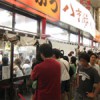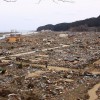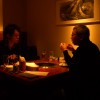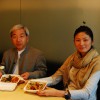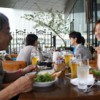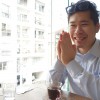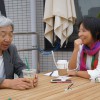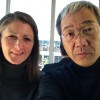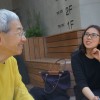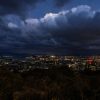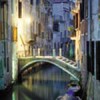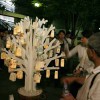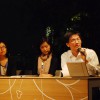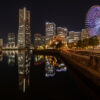Teaching about light
Interviewer: Sachiko Segawa
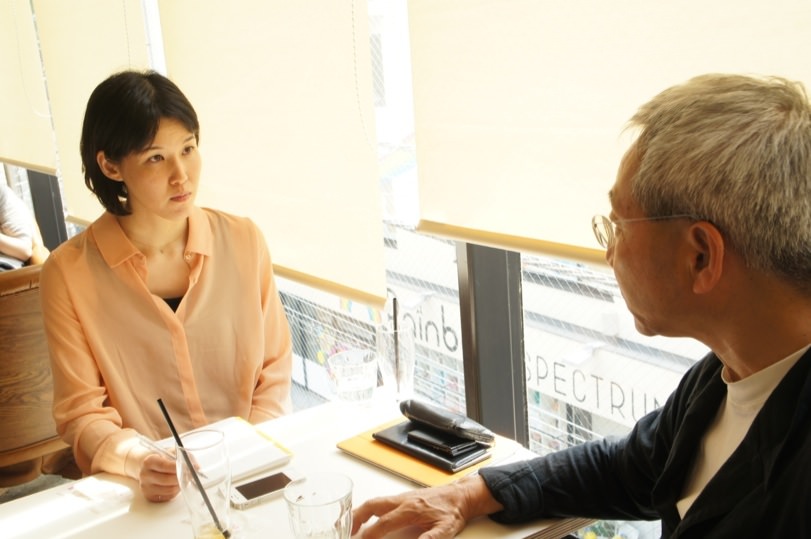
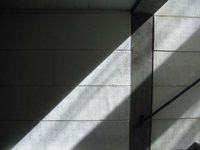
It is important to be sensitive to and sense light in one`s immediate presence.
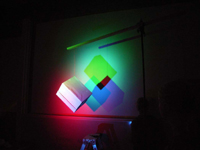
A class experience on the three primary colors of light.
Segawa:Today I would like to talk about “Teaching about Light.”
Mende:If I`m not mistaken, you are one of my former students. Do you have an interest in education?
Segawa: Yes, I do, but the number one reason I chose this topic is because I am a mother. My mother was a teacher, so when I was younger an “educator” was always an immediate presence. At home, she was always our mother, but to other children, she was the “teacher.” She always wore those two hats.
I didn`t progress into the field of education, but at work, I have had to train new and part-time staff. I have come to realize that teaching somebody about light is a difficult task. You taught at Musashino Art University for 10 years. Did you find it challenging at times?
Mende:I never really thought of it as challenging. My studio class was titled “Lighting Seminar,” but not everyone was motived to become a lighting designer. Maybe two or three students out of 10 wanted to be a lighting designer. The other students had different interests and motivations and I would struggle with whether it was best to teach them from a technical point of view of or sensory point of view.
Segawa: I would think that light is especially difficult to teach since is it is not a physical matter. I also studied architectural lighting design at a school in Stockholm. The professor had interesting stories to tell, but lighting was always bundled up in conceptual ideas. Some students were expecting a more technical approach and were dissatisfied with the discussions.
Mende:Yes, that is the difficult thing about teaching light. Teaching from a technical standpoint is possible, but in the case of lighting design, filling one`s head with all those numbers is not always the best method. Maybe because Musashino Art University is was an art-based school, the focus of my studio class was “seeing light and feeling light.” In order to get all the students interested, first I had everyone experience light that they liked. From there the students had to discover the how and why of that light.
Segawa:I understand what you are saying now! But I really think that light is a difficult genre to teach.
Recently, schools that offer entire courses in lighting design have increased. Other than that, maybe a few class in the curriculum of the school of architecture or interior design. However, in reality, there are probably only a few students that come wanting to study lighting design from the start. I was like that too. From what I read in your book, Mr. Mende, you didn`t start out with a strong will to work in the profession of lighting design, either.
Mende:I studied environmental design, but I really liked and was familiar with the architecture. I started to learn about lighting design after I started work at the lighting fixture manufacturer, Yamagiwa. In the beginning, I read and studied technical reports published by the Illuminating Engineering Institute of Japan about optical techniques and illuminance calculations. That was about all the material available to learn about lighting design.
Segawa:Yes, that is an important area, too. I`m not too good with numbers, but everything in lighting design cannot be based on just feeling. I think there has to be some foundation based on mathematics. In your studio class, most of your students choose professions that have nothing to do with light. However, even if one was to become a housewife instead of a lighting designer, having studied light, they might be more sensitive to lighting matters in daily life. I think the ideal is that an accumulation of more people like this might open new doors in the field of lighting design.
Mende:Yes, it would be nice if little by little there was an increase in people with a general knowledge of light.
Segawa:Do you have any new ideas for the next time you have the opportunity to teach about light?
Mende:I want to teach children about light and shadow. Starting a few years back, the Lighting Detectives have a couple workshops for children every year. The workshops are always very interesting and I would like to continue this. Most workshops up until now have been for elementary age children, but I would also like to try teaching the junior high or high school age. Although, we would have to drastically change our approach! Or, maybe I should do the totally opposite and gather up the retired and elderly population and lecture them about how it is their fault Japan has become such a bright place!
Segawa:That is a very new idea!
Mende: Continued, lifelong learning is popular now. Maybe a seminar on “A Fast in Lighting” is a good idea.
Segawa:It might be difficult to change the mindset of the older population, but it is a new challenge. Teaching the children and elderly….
The opportunity for me to teach others have increased, but I don`t want to get caught up in the challenge and forget about just feeling light, being curious, and learning along with my “students.”





